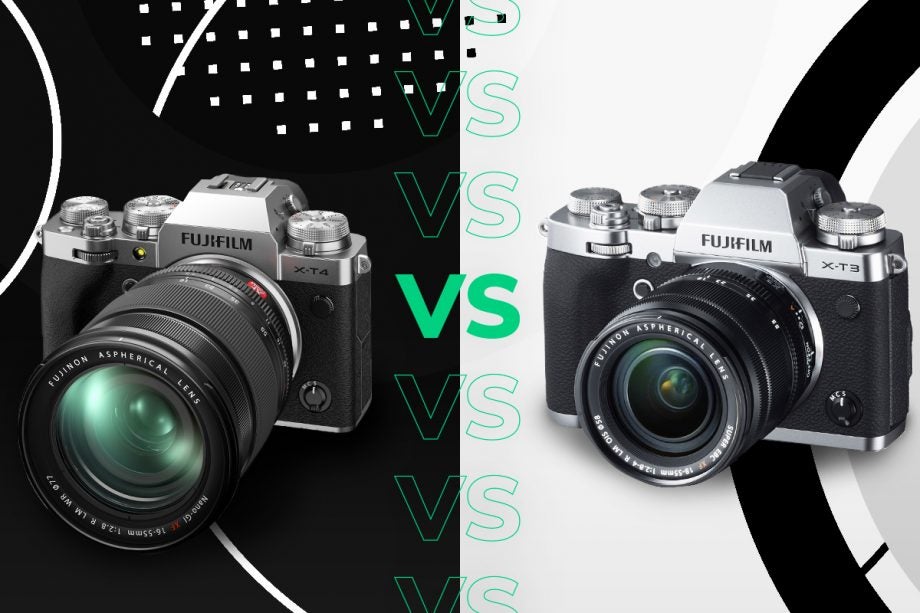Fujifilm X-T4 vs Fujifilm X-T3: 6 things you need to know

Fujifilm has just unleashed the X-T4 – and we’re pretty excited about what this mirrorless camera can offer.
But with the X-T3 remaining on sale and the X-T4 sitting alongside it, what’s actually new with the latest edition? And what bits have stayed the same? Let’s take a dive into the specs and features to see what’s going on.
For a more in-depth look at the new device, check out our hands on Fujifilm X-T4 review.
1. The Fujifilm X-T4 has IBIS for the first time on an XT-series camera
The biggest, and most requested, new addition to the X-T4 is IBIS, or in body image stabilisation. This is the first time we’ve seen this feature on an XT-series camera and it brings the device more in-line with the XH-1. Even though rumours might have suggested otherwise, it looks like the XH-series will be sticking around.
This will be 5-axis 6.5 stop stabilisation with an updated gyro sensor that Fujifilm said can help match the accuracy of the IBIS on the XH-1.
Adding IBIS should not only aid handheld shooting low-light, but of course add that extra stabilisation to Fujifilm’s lenses that lack OIS out-of-the-box.
This is the main reason to pick up the X-T4 and the most notable of upgrades.
2. The X-T4 is slightly bigger and heavier
The addition of IBIS leads to a slightly larger and heavier camera. In terms of specifics, the X-T4 is 2.1mm wider (134.6mm vs 132.5mm), and 5mm deeper (63.8mm vs 58.8mm) however the height remains the same as 92.8mm.
The X-T4 will tip the scales at 607g, a notable 68g heavier than the X-T3.
Numbers are one thing, but during our time with the camera we didn’t find it too heavy or even that much different from the X-T3. For the extra bits you’re getting, the trade-off seems worth it.
3. They utilise the same sensor and processor
Both cameras, at their heart, utilise the same processor and the same sensor. That’s the back-illuminated 26.1MP X-TransTM CMOS 4 3 sensor paired with the X Processor 4. You’ve also got access to Fujifilm’s excellent film simulations across both models even though the new Eterna Bleach Bypass cinematic look is launching with the X-T4.
The X-T4 is also capable of shooting 1080p at 240fps, a nice little upgrade over the X-T3.
4. With the Fujifilm X-T4 you’ve got a new included battery and a new optional vertical battery grip
Keeping the X-T4 running is a new 2200mAh battery (the NPW235) which Fujifilm reps said would allow for 500 shots or 600 shots in a new economy mode. That’s 1.5 times larger than the battery found in the X-T3.
You also be able to buy a brand new vertical battery grip that’ll be available exclusively for the X-T4. This will house two more batteries (all-in Fujifilms says you’ll be able to shoot up to 1700 frames) and intelligently switch when one dies. This grip also packs a shutter button, focus lever, AEL button, command dials and more.
Both cameras charge via USB-C and with the X-T4 you’ve got the power delivery (PD) standard. This allows the camera to be charged via a PD-capable battery pack.
5. The X-T4 has a new shutter unit
Another big addition for the X-T4 is a new shutter unit which can now handle 15fps in burst mode (up from 11) and that makes it the fastest of any mirrorless cameral, Fujifilm said. It’s more durable, supporting 300,000 actuations – double that of the X-T3. Fujifilm has also said the shutter itself is 30% quieter.
6. Fujifilm X-T4 pricing and release dates
The X-T4 will be available in the following options when it launches in April.
- Fujifilm X-T4 Body Only (Black or Silver) – £1549
- Fujifilm X-T4 Kit with 18-55mm lens (Black or Silver) – £ 1899
- Fujifilm X-T4 Kit with XF 16-80mm lens (Black or Silver) – £ 1949
In terms of the X-T3, that started life at £1348 body only and can be had for £1199 now.


